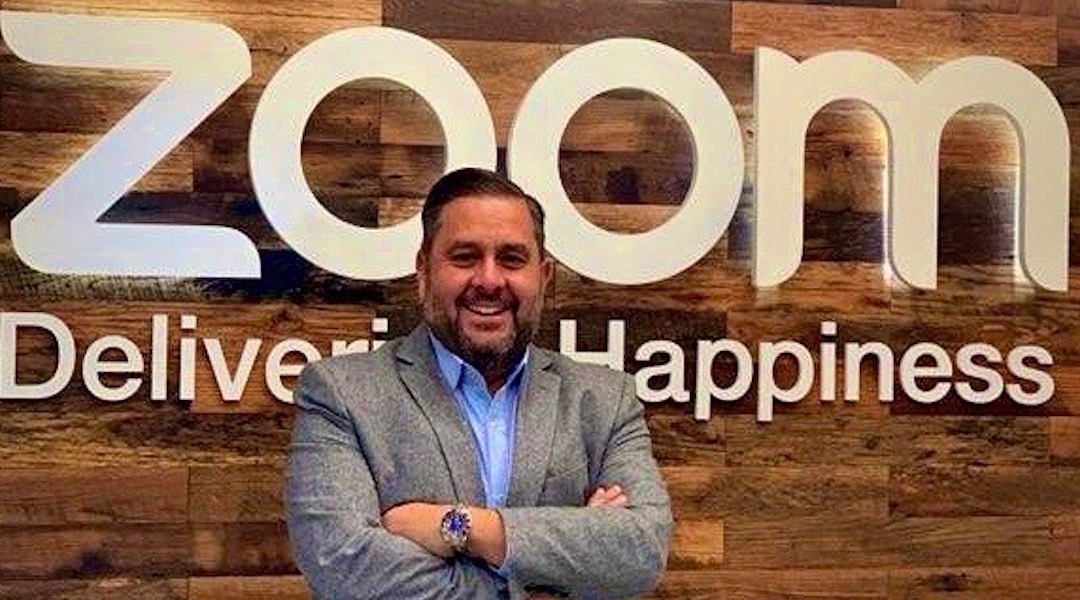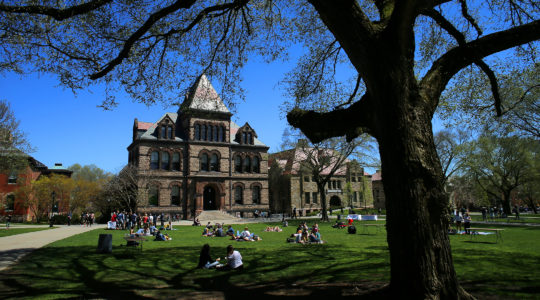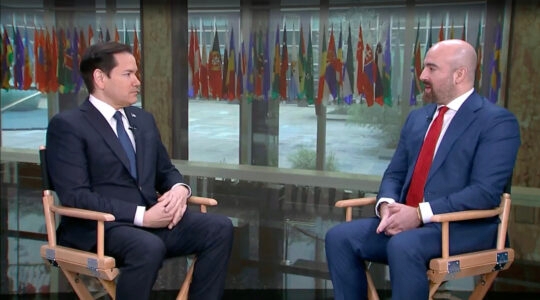(JTA) — When Rosh Hashanah begins on Friday night, some 300 synagogues across North America streaming their High Holidays services via Zoom will be able to set it and forget it thanks largely to one man: Mitch Tarica.
Tarica is the streaming platform’s director of North American sales. He’s also a member of Temple Ner Tamid in Rancho Palos Verdes, California, and he was critical in getting Zoom to make a small but vital tweak to its software that temporarily stopped it from automatically ending a meeting after 24 hours.
That change was crucial to enabling hundreds of synagogues to stream their services on Zoom without running afoul of Jewish laws barring the use of technology on Shabbat and Jewish holidays. For synagogues that request it, Zoom will temporarily allow meetings to run as long as 72 hours, enabling synagogues to set up their stream prior to the start of Rosh Hashanah on Friday afternoon and have it run uninterrupted through Sunday night.
“Rabbi Heller had reached out to Rabbi [Brian] Schuldenfrei, who is my rabbi, and said, ‘Hey, word on the street is someone from Zoom is part of your congregation. We need some help for the High Holidays,’” Tarica told the Jewish Telegraphic Agency in an interview conducted, naturally, via Zoom.
Rabbi Heller is Josh Heller, a Conservative rabbi in Atlanta who in May authored a rabbinic opinion permitting synagogues to stream services on Shabbat and Jewish festivals. Officially, the Conservative movement bars the use of most computer technology on those days, but given the unprecedented circumstances of the coronavirus pandemic, Heller determined that it was permissible to use streaming technology with one critical caveat: The stream had to be up and running before the holiday and require no direct interaction with an electronic device.
That worked fine for Shabbat, when the most widely attended services are held on Friday evening and the following Saturday morning. But Rosh Hashanah lasts two days, and synagogues using Zoom in accordance with Heller’s parameters would find the feed automatically conked out before the second day began.
Heller began working on the Rosh Hashanah problem months ago. Initially he went through the normal channels, reaching out to the company’s tech support department. When that ran aground, he tried engaging the help of a congregant whose company gave Zoom lots of business. That helped him reach someone a little higher up the food chain.
“This has basically been one of my hobbies during the pandemic — figuring out how to use streaming technology in a way that avoids, or at least minimizes, violations of Jewish law,” Heller said.
Eventually he got a tip that there was a rabbi in California who had a congregant in a senior position at Zoom and sent Schuldenfrei an email. Schuldenfrei picked up the phone and called Tarica.
“‘We’re going to figure this out,’” Tarica told Heller. “I already have the entire Palos Verdes Jewish community reaching out to me personally.”
Tarica is a 20-year veteran of the tech industry, but he’s only been at Zoom since last year. Back then, the company was almost solely a business tool, providing videoconferencing services to about 10 million daily meeting participants. That number has since ballooned to 340 million — among them countless synagogues that have come to rely on the company for prayer and community since most of them shut down in-person services in March.
“It was intense, man,” Tarica said of those early weeks after the pandemic transformed Zoom overnight into the must-have tool of the coronavirus era.
Tarica grew up in Denver attending the Conservative Rodef Shalom and settled in Palos Verdes with his wife and two children seven years ago. His daughter had her bat mitzvah at Ner Tamid three years ago, and his son was due to follow suit over Labor Day weekend, but it was bumped due to the pandemic. His wife serves on the synagogue’s executive committee.
When the pandemic hit and the synagogue moved its Shabbat services to Zoom, Tarica found himself running tech support for members of the community struggling to figure out how to use it. But like many Jews, he’s also found the new normal has its upsides, like the connections he forms with other congregants on Saturday morning who use Zoom’s breakout room function to discuss the rabbi’s sermon — or just as often chat about their week.
“I’m connected with 75 people during services, but then we break into groups of four or five and make a real connection,” Tarica said. “You don’t get to do that in shul, unless it’s afterward at the kiddush.”
Notably, Ner Tamid will not be using Zoom to stream its High Holiday services this year. The synagogue is going with a more choreographed service that is better supported by a different platform.
But when Tarica logs on, he’s going to be thinking of all the ways he and his company have been instrumental in helping the world weather this crisis.
“The ability to give back in other ways than monetary ways just means a lot,” he said. “And a lot about the Jewish holidays is about looking forward and health and trying to refresh a new year. So that’s what I’m going to be praying for when I virtually sit in synagogue with my family, praying for a healthy year ahead. We’re ready for a new year to begin.”
JTA has documented Jewish history in real-time for over a century. Keep our journalism strong by joining us in supporting independent, award-winning reporting.






